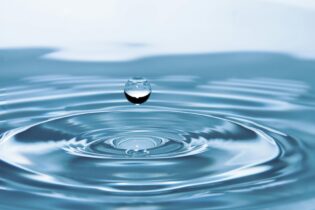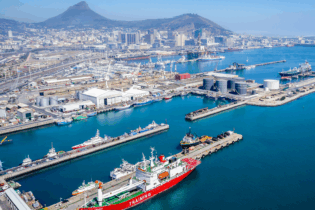Large parts of the country’s dams continued their downward slide this week despite heavy showers falling in Gauteng over a period of three days at the beginning of the week.
A weekly dam level report by the Department of Water and Sanitation shows that the average country’s dam levels dropped by a percentage from 62,3% to 61,4% this week. This is despite large parts of Gauteng receiving a three-day consistent rainfall that started with heavy storms on Saturday. Northern Cape, which benefitted immensely from the showers, was an exception to the rule as its dams rose from 84,3% to 86,8%. The good news however, is that there is 19 663,9 cubic metres of water in the country storage for use until the next heavy rains that will change the dams trajectory. The full capacity on a normal day is 32 015,5 cubic metres. Northern Cape, which also received substantial amounts of rains over the weekend, rose 84,3% to 86,8% this week. This may be attributed to the small size of the province’s dams that fill up quite easily. However, against this backdrop, the Department of Water and Sanitation has called for cool heads as more rains are expected to fall over most parts of the country soon. Weather experts are predicting a wet festive season that may result in flash floods in some provinces. The report shows that KwaZulu-Natal is fast teetering on below its half levels after dropping from 52,1% to 51,7% this week. Unless the province receives heavy downpours in the next two weeks or so, it is likely to join Eastern Cape as one of the regions whose dam levels have plummeted to below 50%. Eastern Cape dams are currently standing at 48,6%. Although Free State has dropped its levels to 70,1%, the province has the highest level dam levels, thanks to its three big dams in form of Gariep, Vanderkloof and Sterkfontein. Gariep Dam was captured at 70,9% while Vanderkloof Dam remains stable at 70,1%. Sterkfontein, on the south east of the province, recorded at 94,3%.However, Kalkfontein Dam and Fika-Patso in Qwaqwa remain a source of concern after they recorded 17,4% and 27,6% respectively.
Gauteng also experienced a percentage drop from 93,5% to to 92,5%. However, this is seven percent improvement compared to the same period last year when the levels were captured at 85%. The Vaal dam dropped marginally to 66%. Limpopo and Mpumalanga also dropped marginally as they recorded 58,1% and 64,9% apiece. Hans Merensky and Magoebaskloof have reached their capacity after recording 100,1% and 100% each. However, Mopani District dug deeper into a serious water crisis as Middel-Letaba Dam dropped to 0,7% and Tzaneen registered 10,2%. The Department of Water and Sanitation is monitoring the situation closely and may work with the Mopani District Municipality to supply additional jojo tanks in the region to alleviate the situation. North West experienced a percentage drop from 61,7% to 60,4% this week. The figure represents a 10% increase compared to the corresponding period last year. As Western Cape approaches the end of its hydrological season, it is beginning to experience a percentage drop in its dam levels as they dropped from 90,1% to 89,5% this week. The province has 1 500,2 cubic metres of water in its reservoirs that is expected to sustain it until the next winter in 2021.







